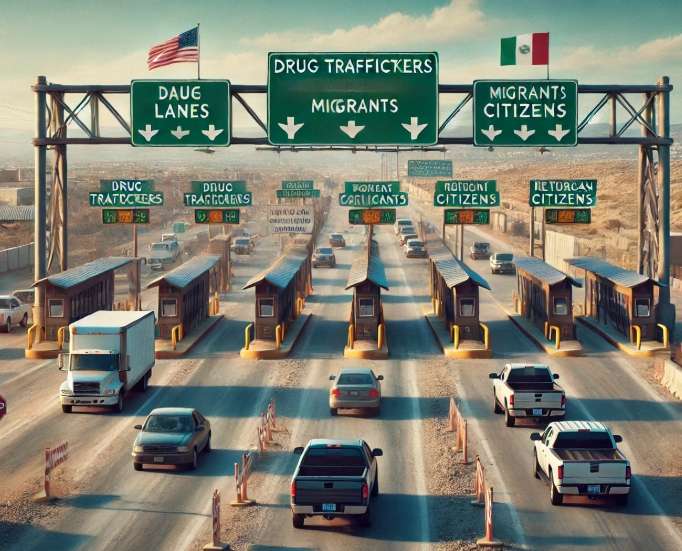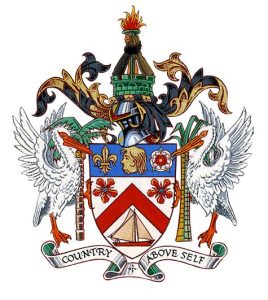North American Trade Tensions to Resume on March 4.
The looming threat of tariffs on Canadian and Mexican imports hung heavy in the air as President Trump, standing alongside French President Emmanuel Macron, declared that the duties would proceed as planned. Despite concerted efforts by both neighboring countries to enhance border security and curb the flow of fentanyl into the United States, the March 4th deadline remained unchanged. Trump’s statement, delivered during a joint press conference, lacked specifics on whether Canada and Mexico had met sufficient benchmarks to avert the 25% tariffs or if concrete targets had been established. This ambiguity left many observers, particularly in the North American business community, in a state of uncertainty. The prospect of tariffs on over $918 billion worth of imports, encompassing crucial sectors like automobiles and energy, raised concerns about potential disruptions to the tightly integrated North American economy. The auto industry, with its complex cross-border supply chains, stood as particularly vulnerable.
While President Trump emphasized the principle of “reciprocal” tariffs to counter trade barriers imposed by other nations, including France, the specific issue of France’s digital services tax, which impacts American tech giants like Google, Facebook, and Amazon, was conspicuously absent from the discussions with President Macron. Ironically, just days prior, Trump had directed his administration to reinitiate investigations into countries levying digital service taxes on U.S. companies. This move underscored the complex and often contradictory nature of the administration’s trade policies. The backdrop to these tariff threats included previous efforts by Canada and Mexico to bolster border security, actions that had initially led to a one-month extension of the original February 1st deadline. However, the ultimate fate of the tariffs hinged on the demonstrable effectiveness of these measures, a point emphasized by trade experts who cautioned against expecting a complete rescinding of the tariffs even with progress on security issues.
The silence from key government bodies, including the White House, the U.S. Trade Representative’s office, and the Commerce Department, regarding ongoing negotiations further fueled speculation and anxiety in the days leading up to the deadline. The tariff situation was further complicated by a series of other trade measures announced by the Trump administration. The decision to raise steel and aluminum tariffs to a flat 25%, eliminating previous exemptions for Canada and Mexico, added another layer of complexity to the trade landscape. These increases, set to take effect on March 12th, targeted a range of steel products and signaled a hardening stance on trade with traditional allies.
Beyond the immediate concerns surrounding steel and aluminum, President Trump also floated the possibility of 25% tariffs on imported automobiles, pharmaceuticals, and semiconductors. These proposals, along with suggestions of potential trade measures that could trigger an early renegotiation of the United States-Mexico-Canada Agreement (USMCA), injected further uncertainty into the future of North American trade relations. Despite having signed the USMCA in 2020 after renegotiating NAFTA, Trump’s persistent concerns about auto imports from Mexico and Canada suggested a lingering dissatisfaction with the agreement.
Meanwhile, diplomatic efforts continued behind the scenes. Mexican Economy Minister Marcelo Ebrard characterized discussions with U.S. trade officials as “constructive” and highlighted the commencement of joint efforts to address trade issues. Mexico’s deployment of 10,000 National Guard troops along its northern border, part of an agreement with the U.S., demonstrated a commitment to addressing security concerns. Simultaneously, Mexico City Mayor Claudia Sheinbaum pressed the U.S. to take action against the flow of firearms into Mexico, highlighting the interconnected nature of security challenges.
Canada, too, took significant steps to address the issues raised by the Trump administration. The appointment of intelligence official Kevin Brosseau as a “fentanyl czar” underscored Canada’s commitment to coordinating efforts against drug smuggling. The reclassification of drug cartels as terrorist organizations and the increased surveillance of the border with drones and helicopters further demonstrated Canada’s proactive approach. Prime Minister Justin Trudeau maintained close communication with President Trump, emphasizing their shared commitment to combating fentanyl trafficking. While threatening retaliatory tariffs on American products, Trudeau also reiterated Canada’s dedication to preventing the imposition of U.S. tariffs.
While the immediate impact of these trade tensions centered on North America, the potential ripple effects extended beyond the continent’s borders. Caribbean economies, although not directly implicated in the tariff disputes, faced the possibility of increased prices for imported goods, a factor that could impact the quality of life for their citizens. The broader global economic outlook was also clouded by the escalating trade tensions. The combination of tariffs and federal spending cuts increased the likelihood of an economic slowdown, with the potential for a full-blown recession depending on the aggressiveness of policy implementation and the responses of businesses, consumers, and the Federal Reserve. A large-scale, simultaneous implementation of these policies could significantly heighten the risk of a recession in the U.S., a scenario that could trigger a decline in tourism arrivals in the Caribbean, further impacting regional economies.
Share this content:












Post Comment